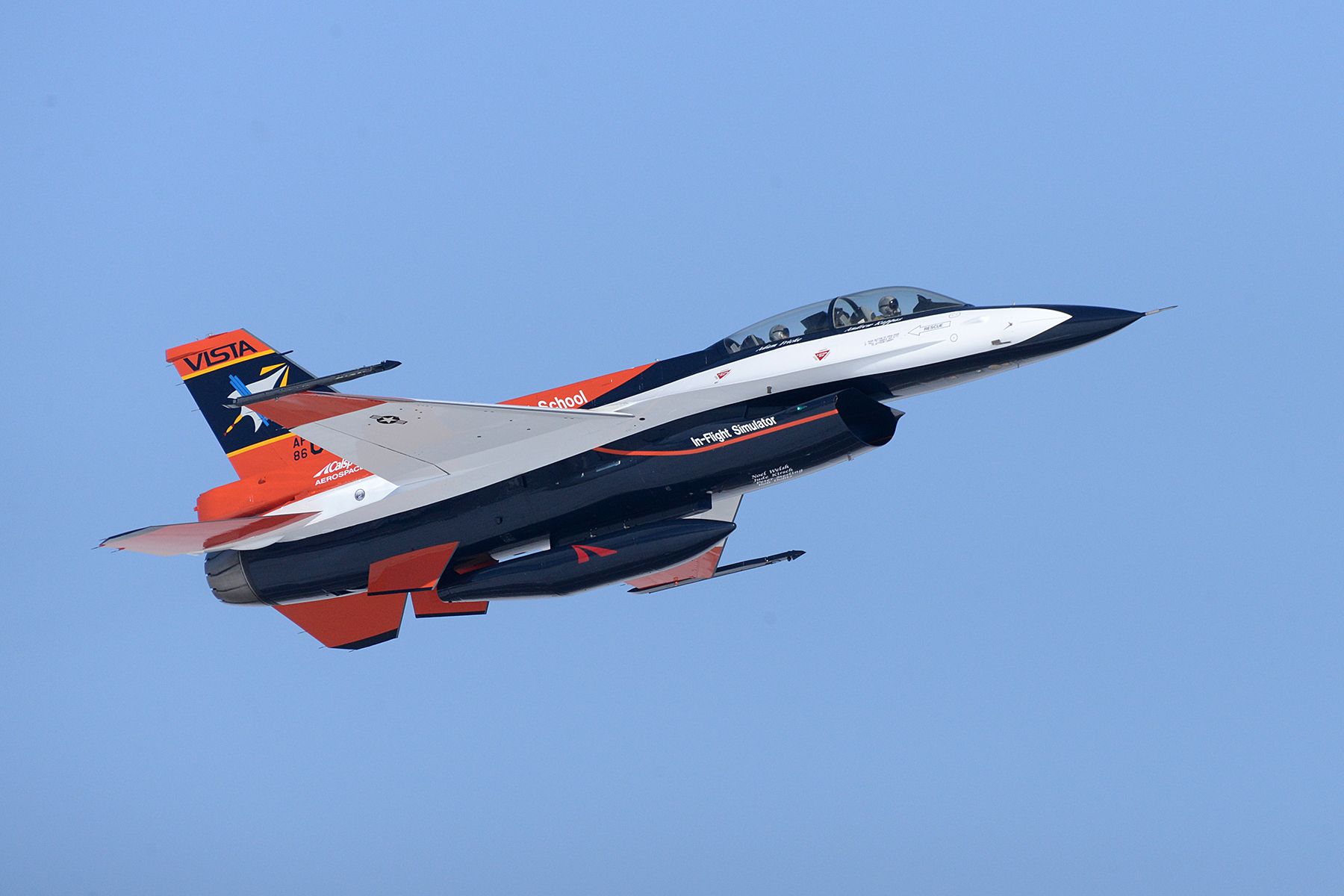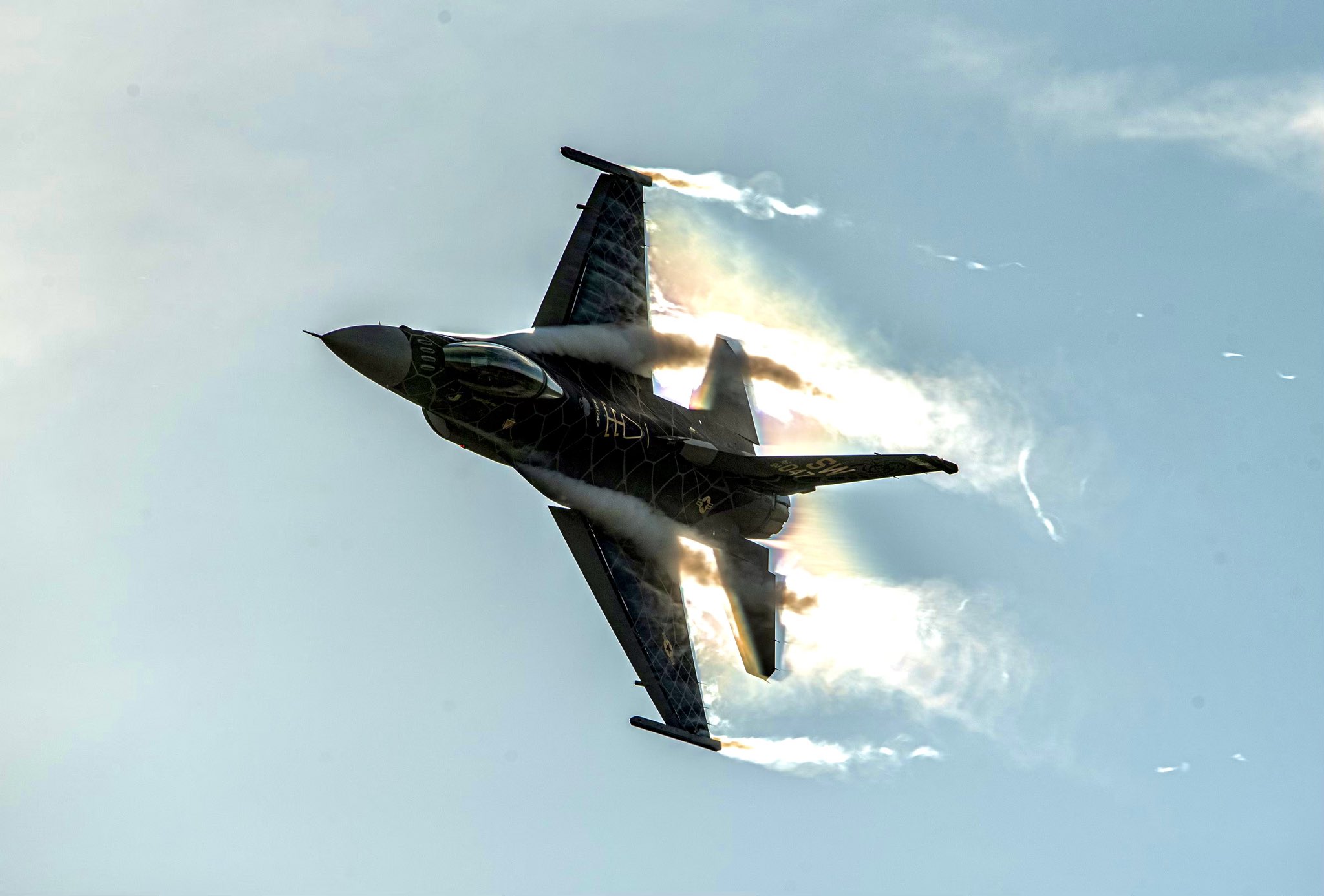As the F-16 with an orange and white paint scheme went into the skies at midday as the sun shone brightly over California, it seemed like a routine sortie. But nothing about it was routine. The aircraft was not piloted by a human but by AI (artificial intelligence), and in its cockpit was US Air Force Secretary Frank Kendall.
The AI-controlled F-16 went up against another human-piloted aircraft, which marks one of the biggest advancements in military aviation since the introduction of stealth technology. It is a giant leap that could make human pilots redundant.
Frank Kendall was very impressed by the demonstration and said that he would trust it with the ability to decide whether to launch weapons.
Kendall sat in the cockpit of the experimental F-16 jet, X-62A, or VISTA (variable in-flight simulator test aircraft), as it flew at a lightning-fast speed of over 550mph over Edwards Air Force Base. The experiment went up against the human-piloted F-16 as both came within 1000 feet of each other, twisting and looping to force their opponent into a defensive position.
Kendall’s flight came after the first known combat between a human pilot and a fighter jet controlled by AI in April. An AI-run fighter jet went up against another controlled by a human pilot in a drill. The aircraft flew at up to speeds of 1,200mph during combat, which is often referred to as a dogfight. One was manned, while the other jet was an AI-operated F-16.
Kendall was up in the air for an hour. The USAF aims to have over 1,000 AI-controlled jets in the coming years.
“It’s a security risk not to have it. At this point, we have to have it,” Kendall said after coming out of the cockpit. Vista has showcased remarkable progress and has outperformed human pilots in certain scenarios.
The pilots working on Vista want the first fleet to be ready by 2028 and say the programs are learning so quickly that some are already beating human pilots in combat.
Vista’s military operators contend that it is the of its kind AI aircraft in the world, where the software first learns from millions of data points in a simulator, then tests its conclusions during actual flights. The real-world performance data is fed into the simulator, and the AI processes it to imbibe the learnings.
China has AI, but there has been no indication that it has managed to run tests outside the simulator.
An Indian Air Force fighter pilot, while speaking to the EurAsian Times, expressed that it will still be a while before AI matches the skill set of a human pilot. “In the future, yes… But right now, maybe not,” he said when asked if fighter pilots will become redundant.
“Fighter pilot is as good as the sensors and weapons he has. If you mean the sheer gunfight skill, AI vs AI or dogfight, it may take longer time,” the retired IAF fighter pilot said. He has extensive experience flying a variety of Russian and NATO aircraft.
However, the operators of Vista claim otherwise. The first dogfight of an AI-controlled aircraft was in 2023. Since then, there have been many dogfights, but there has been tremendous learning for the AI, and some versions of Vista are already ready to beat human pilots in air combat.
AI In Military Aviation
The US Air Force is aggressively pursuing AI integration, aiming for a fleet of over 1,000 unmanned warplanes by 2028. The USAF’s strategy is driven by the vulnerability that fighter jets face in the face of progress made in electronic warfare.
The US military is moving towards AI-enabled aircraft because of security concerns, cost efficiency, and strategic advantages.
However, apprehensions linger over giving AI the autonomy to use lethal weapons without sufficient human oversight. Humanitarian groups have been advocating for stricter regulations on AI use in warfare.
Kendall assured that human oversight would always be integral to the decision-making process involving weapon deployment.
The shift towards AI-operated aircraft has raised questions about whether human pilots will fade to oblivion. While some recognize the possibility of decreased manpower needs, others stress the importance of maintaining superiority in AI technology to counter potential adversaries.

Future war scenarios envision swarms of American unmanned aircraft providing an advance attack on enemy defenses to give the US the ability to penetrate airspace without risking pilot lives.
But the shift is also driven by money. Production delays and cost overruns hamper the USAF modernization of the F-35 Joint Strike Fighter, costing an estimated US$ 1.7 trillion. Smaller and cheaper AI-controlled unmanned aircraft are the future, Kendall asserted.
Meanwhile, if computers can beat humans can be gauged by chess competitions. Computers were first able to defeat professional chess players in the late 1980s. Their most prominent triumph was the victory of Deep Blue over then-World Champion Garry Kasparov in 1997.
In another prominent match in 2007, Kramnik, then-World Champion, played a six-game match against the computer program Deep Fritz in Germany. Kramnik lost two games and drew four.
Overall, machines have started to beat humans, and it will not take long before AI scores a 100% kill rate against manned fighter pilots. However, in a contested environment, how these AI fighters perform against powerful AD systems is to be seen.
- Ritu Sharma has been a journalist for over a decade, writing on defense, foreign affairs, and nuclear technology.
- The author can be reached at ritu.sharma (at) mail.com
- Follow EurAsian Times on Google News

Wanda Parisien is a computing expert who navigates the vast landscape of hardware and software. With a focus on computer technology, software development, and industry trends, Wanda delivers informative content, tutorials, and analyses to keep readers updated on the latest in the world of computing.



